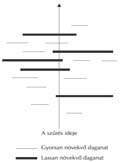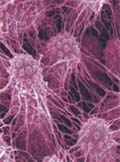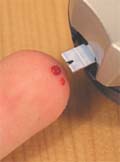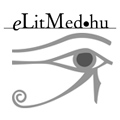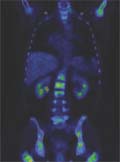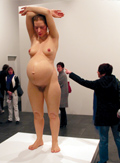The eLitMed.hu medical portal uses computer cookies for convenient operation. Detailed information can be found in the Cookie-policy.
Lege Artis Medicinae - 2012;22(10-11)
Content
[The biological basis of screening: natural history of malignous tumours]
[The development of malignous tumours is a prolonged, multistage process. The onset of clinical symptoms and subjective complaints is preceded by the preclinical detectable phase, during which the tumour does not cause any symptoms but it has some signs and can be detected by screening. Information on the tumour’s natural history is of practical importance for choosing the screening strategy. When evaluating screening results, the various biases related to biological reasons need to be taken into consideration.]
[Hospital antibiotic stewardship 2012]
[The increasing resistance of hospital pathogens to antimicrobial drugs and the related morbidity and mortality is a worldwide problem. The development of new antimicrobial drugs is slow. Hospital antimicrobial stewardship is aimed to optimise antimicrobial therapy of hospitalised patients, improve patients’ outcome and prevent the development of resistance to antimicrobial agents. This review describes antibiotic stewardship in clinical practice.]
[Is postmenopausal hormone therapy suitable for cardiovascular prevention?]
[After menopause, coronary disease and infarction become increasingly common in women owing to estrogen deficiency. Therefore, hormon replacement therapy (HRT) had been widely used to prevent these problems and manage postmenopausal symptoms. In 2002, a large, randomised, placebo-controlled study reported that HRT was accompanied by serious side effects and was not suitable for cardiovascular prevention. However, subsequent re-alanyses of the data of this study and new studies in the past 10 years suggest that in women younger than 60 years and if started within 10 years after the menopause, HRT has a number of advantages and very few disadvantages. It substantially improves quality of life, while the absolute risk of side effects is small, and HRT is suitable for the primary prevention of coronary diseases. I summarise the cardiovascular aspects of menopausal hormone therapy, in order to help the necessary paradigm shift in this matter.]
[The role of the DPP-4 inhibitor sitagliptin in the therapy of type 2 diabetes, in light of the new guidelines]
[Type 2 diabetes has become a global public health problem, threatening the economies of all nations, as a consequence of rapid urbanisation, changing eating habits, sedentary lifestyle and obesity. Asian populations tend to develop diabetes at younger ages and lower body mass index compared with Caucasians. The latest guidelines of the American Diabetes Association and the European Association for the Study of Diabetes recommend lifestyle interventions as the first step for patients with newly diagnosed type 2 diabetes. The widely used metformin remains one of the first-line drugs for type 2 diabetes. If monotherapy alone does not achieve or maintain the target HbA1c level, addition of a second oral agent is recommended as a second step. The highly selective dipetidyl peptidase-4 inhibitor sitagliptin and metformin are efficient and well tolerable. The complementary effects of sitagliptin and metformin lead to an efficient, safe and long-term improvement in glycaemic control.]
[The sensor-augmented insulin pump and its use in clinical practice]
[Diabetes is one of the most common chronic diseases. Technological advances provide increasingly refined tools for clinicians to manage type 1 and type 2 diabetes. Continuous subcutaneous insulin infusion (CSII), also known as insulin pump, allows for a sophisticated delivery of basal as well as bolus insulin. Continuous glucose monitoring helps patients and clinicians understand and manage changes in blood glucose trends and minute-to-minute blood glucose variablitiy. The sensor-augmented insulin pump was created by the merging of these devices, which has been a revolutionary step towards self-regulatory, closed-loop insulin delivery or the creation of an artificial pancreas.]
1.
Clinical Neuroscience
Is there any difference in mortality rates of atrial fibrillation detected before or after ischemic stroke?2.
Clinical Neuroscience
Factors influencing the level of stigma in Parkinson’s disease in western Turkey3.
Clinical Neuroscience
Neuropathic pain and mood disorders in earthquake survivors with peripheral nerve injuries4.
Journal of Nursing Theory and Practice
[Correlations of Sarcopenia, Frailty, Falls and Social Isolation – A Literature Review in the Light of Swedish Statistics]5.
Clinical Neuroscience
[Comparison of pain intensity measurements among patients with low-back pain]1.
Clinical Neuroscience Proceedings
[A Magyar Stroke Társaság XVIII. Kongresszusa és a Magyar Neuroszonológiai Társaság XV. Konferenciája. Absztraktfüzet]2.
3.
Journal of Nursing Theory and Practice
[A selection of the entries submitted to the literary contest "Honorable mission: the joys and challenges of our profession" ]4.
Journal of Nursing Theory and Practice
[End of Life and Palliative Care of Newborns in the Nursing Context]5.
Journal of Nursing Theory and Practice
[Aspects of Occupational Health Nursing for Incurable Patients ]



